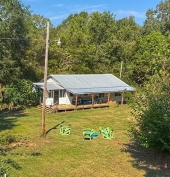
 2
2




 4
4




 7
7




This is all just my opinion based on a flawed memory

 3
3




John Daley Bendigo, Australia The Enemy of progress is the hope of a perfect plan
Benefits of rainfall collection https://permies.com/t/88043/benefits-rainfall-collection
GOOD DEBT/ BAD DEBT https://permies.com/t/179218/mortgages-good-debt-bad-debt
 4
4




This is all just my opinion based on a flawed memory

 3
3




 5
5




This is all just my opinion based on a flawed memory

 6
6




when in doubt f@%k it, when not in doubt get in doubt ... in the meantime, plant your seeds.


 2
2




Just my 2 cents...
Money may not make people happy but it will get you all the warm fuzzy puppies you can cuddle and that makes most people happy.




A human being should be able to change a diaper, plan an invasion, butcher a hog, conn a ship, design a building, write a sonnet, balance accounts, build a wall, set a bone, comfort the dying, take orders, give orders, cooperate, act alone, solve equations, analyze a new problem, pitch manure, program a computer, cook a tasty meal, fight efficiently, die gallantly. Specialization is for insects.
-Robert A. Heinlein

|
Honk if you love justice! And honk twice for tiny ads!
The new kickstarter is now live!
https://www.kickstarter.com/projects/paulwheaton/garden-cards
|




